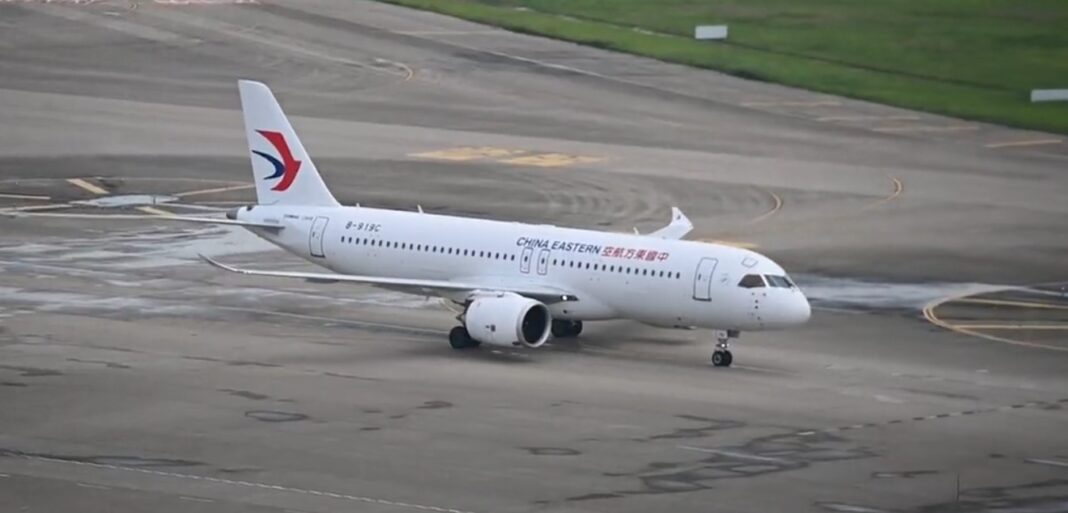China Eastern and Commercial Aircraft Corporation of China (COMAC) signed an agreement this Thursday for the purchase of 100 C919 aircraft, a program aiming to be the alternative to the Airbus A320 and Boeing 737 families to cater to the massive local demand.
This order, valued at around USD 9.9 billion, is the largest achieved so far by COMAC for the model.
According to a report from the Xinhua agency, the aircraft from this order will be delivered in batches between 2024 and 2031, with five to be received next year, ten per year between 2025 and 2027, 15 between 2028 and 2030, and finally 20 in 2031.
China Eastern was the first airline to operate the C919 commercially in May of this year, thus ending the development phase of the program that began in 2011. It currently has three in operation, with two more to be added before the end of the year. The five planes are based in Shanghai and fly to destinations such as Beijing, Guangzhou, Shenzhen, Chengdu, Xiamen, Wuhan, and Qingdao.
The C919 comes in versions with varying seat counts (from 158 to 190), similar to its western competitors from Airbus and Boeing. The average flight range of the C919 will be around 4,075 km, with a maximum of 5,500 km, capable of flying at an altitude of up to 12,000 m.
COMAC anticipates that over 40,600 new aircraft will be delivered in the global market between 2020 and 2039, totaling around 5.9 trillion dollars. Of these, the delivery volume of the Chinese C919 and ARJ21 aircraft developed by the company could be around 732 billion dollars.
Challenges of the C919
The development of the «A320/737 killer» was not without complications. Since its introduction in 2008, COMAC faced problems with parts supply from its vendors and tightened export controls by the United States.
Since December 2020, the US has required special licenses to export parts and technical assistance to any company linked to the Chinese military. This measure particularly affected the development of the program, which had already experienced delays in its initial schedule.
While the aircraft is assembled in China, it largely depends on western components. The powerplant and avionics, two key elements in developing a new aircraft, are not produced in the Asian country. As a result, the project became more vulnerable to international restrictions on exports and technology transfers.






